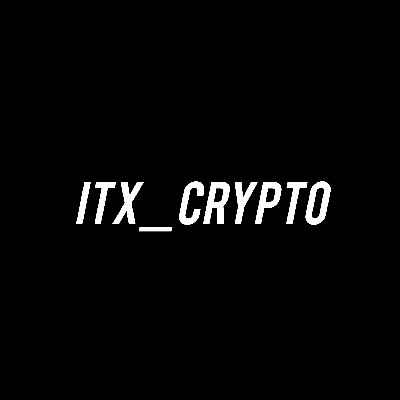“SWTCH Post-Launchpool Analysis: Can Switchboard’s Oracle Token Sustain Its Momentum?”
Quick TL;DR — corrected facts first: the chart you shared is SWTCH (Switchboard) which was added to Bitget’s Launchpool and started trading on 9 Sept 2025 (Launchpool allocation: 5.5M; total supply listed on the announcement). SWTH (Carbon Protocol) is a different token (the Carbon / Switcheo lineage) and should not be conflated with SWTCH. I’ve rewritten your post to remove that mix-up, tightened the technicals, and added crisp fundamentals and trade rules. Sources for the key claims are shown inline.
1) What just happened (market recap)
SWTCH printed classic post-listing volatility: an initial pop, a short pullback into the lower trendline (~0.127 on your tape), then a strong rebound into the 0.13–0.14 band where it’s consolidating. The intraday MACD (12,26,9) flipped bullish, histogram bars turned green, and OBV ticked higher — all signs of accumulation rather than a one-off pump. Volume spiked during the push higher, which makes this a better-quality move than a thin, retail-only lift. (Your on-chart micro numbers — dip to 0.12702 → rebound to 0.13510 = +5.9% — line up with this narrative.)
Why we saw the move: Bitget’s Launchpool campaign (staking to earn/SWTCH rewards) and the listing created immediate demand and greater visibility for Switchboard. Launchpool events reliably pull short-term liquidity into a project while token rewards are distributed and early holders rotate. Trading for the SWTCH/USDT pair and Launchpool details are on Bitget’s official announcement.
2) Fundamentals — what Switchboard actually is (and the important correction)
Switchboard (SWTCH) is a permissionless, multi-chain oracle protocol (originating on Solana) that provides customizable on-chain data feeds and verifiable randomness for dApps. It’s designed to be fast, flexible, and developer-friendly, and is positioned as a core infra piece for many DeFi apps that require reliable external data. That infrastructure narrative is the real utility story supporting price discovery here — not the Switcheo/Carbon token story.
Correction: The token SWTH is Carbon Protocol / Switcheo lineage and is a separate asset. If you had mixed SWTH fundamentals into the SWTCH post, remove those references — they’re different projects with different tokenomics and ecosystems. For Carbon’s history and token identity see major listing pages.
3) Tokenomics & liquidity — what to watch
From the listing material: Bitget disclosed the Launchpool allocation and basic supply facts (Showed a 5.5M Launchpool allocation and a listed total supply in the announcement). Launchpool campaigns bring retail staking, then token unlocks / withdrawals can introduce incremental sell pressure once rewards are claimable. For Switchboard, the team’s tokenomics and network data point to a protocol that already secures meaningful on-chain value for dApps — a tangible product/usage angle that supports longer-term demand if adoption continues.
Operational note: watch distribution/vesting schedules and the timing when Launchpool rewards become withdrawable — those timestamps often coincide with transient selling. Also track exchange orderbooks (depth) — low depth + higher supply releases = higher chance of sharp wicks.
4) Indicator read — what the charts are telling us now
MACD (12,26,9): bullish crossover on the 4H/1H frames — momentum is positive but still young.
TEMA / EMA cluster: price sitting above short EMAs (5/10/20) and a 9-TEMA acting as near-term dynamic support is constructive. Respecting the TEMA on pullbacks suggests buyers are stepping in.
OBV / Volume: OBV rose from ~23.91M → 24.51M across the micro-frames you gave — accumulation is present but not yet explosive; keep an eye on whether OBV keeps pace with price. If price rises while OBV flattens, treat breakouts as suspect.
Structure: ascending channel on the 30-min; immediate supply zone 0.140–0.150; important support cluster 0.10–0.11 beneath that. A drop under ~0.132 (your neutral pivot) weakens the short bias.
5) Risk checklist — what could go wrong
Launchpool reward rotation: participants may rotate out after claiming rewards; be ready for chop when withdrawals open.
Low depth and whales: low-cap infra tokens can see large single orders that create 10–20% wicks. Position sizing is critical.
Macro risk: large BTC/ETH moves can sweep alts; an alt-wide correction can breach supports even when token fundamentals are fine.
Competition & adoption: even strong oracles compete with Chainlink, Pyth, etc.; adoption velocity matters more than buzz.
6) Practical trade structure (concise, actionable, not financial advice)
Long (momentum entry): wait for clean breakout above 0.1345–0.1350 with rising OBV and 4H MACD still positive. Target 0.145 → 0.150 (scale out 50% at 0.145). Trail stop to TEMA(9) or fix at stop-loss 0.131 (just under the short TEMA). Risk:reward aim ~1:2 on initial leg.
Conservative long (swing): enter on a pullback to the 9–20 EMA cluster (~0.128–0.132), only if OBV holds or rises and higher timeframes keep MACD positive.
Short / fade: if price rejects 0.140–0.150 with MACD bearish cross and OBV failing, consider a small short with tight stop above the 0.150 supply zone; target 0.12 area.
Abort signal: price closes below 0.132 on 4H with falling OBV — shift to neutral and step aside.
Always define position sizing so that a full stop-loss hit is a small % of your capital.
7) Watchlist & action items (next 24–72h)
1. Monitor Bitget withdrawal timestamps for Launchpool claims (sell pressure windows).
2. Watch OBV vs price divergence — if OBV lags while price climbs, be skeptical.
3. Track orderbook depth and recent large trades (whale flow).
4. Re-check tokenomics / vesting disclosures from Switchboard docs — heavy unlocks change the game.
Final words
This is a fundamentally plausible short-to-mid trade idea built around a genuine infrastructure project (Switchboard) and the immediate demand lift from a major exchange Launchpool. The edge is real if volume and OBV continue to confirm price. However, Launchpool + low float = amplified moves — both up and down — so prioritize risk controls: small size, clear stops, and a plan for rotation.$SWTCH
today update
$PORTAL
Here’s the latest on Portal (PORTAL) crypto as of today:
---
🔍 Key Updates
1. Current Price & Market Cap
Price is around $0.047‑$0.05 USD.
In Pakistani Rupee (PKR), that’s approx ₨13.51 per PORTAL.
Circulating supply: ~ 580 million PORTAL of a 1 billion max supply.
2. Recent Performance & Sentiment
The token has shown very weak performance over the past year. One report puts its decline at ~8,600% over last year, largely due to a lack of active development and many delistings.
Trading volume is fairly low, and it is no longer among top projects in terms of visibility.
3. Project Activity & Concerns
The project appears to have been mostly dormant since late 2024. There are reports of frozen dApps, no recent roadmap updates, and little communication from developers.
Delistings from major exchanges have hurt liquidity and access.
4. Token Unlocks
An unlock of ≈25.61 million PORTAL tokens (≈2.56% of total supply) happened or was scheduled around February 28.
---
⚠️ Outlook & Risk
Without major developments (product updates, partnerships, better communication, relisting on exchanges), recovery seems unlikely in the near term.
Token unlocks tend to put downward pressure on price unless there is strong accompanying demand. The February unlock was one such event.
---
If you like, I can also pull up technical charts or price predictions, or compare with similar gaming / cross‑chain/ alt projects so you can see how it stacks up. Do you want that?
Decoding Switchboard (SWTCH): The Oracle Powering Tomorrow's DeFi📈
♦️I've seen my share of projects come and go. Today, I'm breaking down this chart for SWTCHUSDT on a 4-hour timeframe, but let's keep it real: while the technicals give us a snapshot of the moment, the real meat here is in the fundamentals. Oracles like Switchboard aren't just another token; they're the backbone of reliable data in a decentralized world. I'll keep the K-line chatter short and sweet, then dive deep into what makes SWTCH tick under the hood. Think of this as a chat over coffee with a seasoned trader who's spotted gems like Chainlink early on.
🎟First off, glancing at the chart—it's showing SWTCH trading around 0.13428 after a steady downtrend from highs near 0.20. Those blue dots look like a Parabolic SAR overlay, flipping bearish as price dipped, but the recent candles are telling a story of potential reversal: a mix of green hammers and dojis suggesting buyers stepping in at support levels around 0.12-0.13. RSI(14) is hovering at 57.37, up from sub-50 territory, which hints at building momentum without screaming overbought yet. The lower indicator (maybe a smoothed RSI or MACD variant) is trending up too, aligning with that subtle shift. Qualitatively, it feels like the token's shaking off post-listing dumps, possibly gearing for a bounce if broader market sentiment flips positive—especially with Fed rate cut buzz in the air. But hey, charts are fickle; fundamentals are where the long-term plays hide.
🧿Now, let's shift gears to the heart of SWTCH: Switchboard itself. This isn't some meme coin riding hype; it's a battle-tested decentralized oracle network that's been quietly solving one of crypto's biggest pain points since 2021. Oracles bridge the gap between blockchains and real-world data—think stock prices, weather feeds, or random numbers for gaming—without which DeFi would grind to a halt. Switchboard stands out as permissionless and multi-chain, meaning anyone can spin up custom data feeds without gatekeepers, and it operates across ecosystems like Solana, Aptos, and beyond.94ca33 What hooked me early on is their focus on speed: their Surge product delivers updates in under 7 milliseconds, up to 500+ times per minute, blowing past competitors like Pyth or Chainlink in latency.e8b965 In a space where seconds can mean millions in slippage or failed liquidations, that's game-changing for high-frequency trading or perps platforms.
⏯Team:
Digging into the team, you've got founders Chris Hermida, Mitchell Gildenberg, and Alex Stewart—guys with solid engineering chops from big tech and early crypto ventures. Hermida's background in scalable systems at places like Google vibes with Switchboard's tech stack, which uses Trusted Execution Environments (TEEs) for secure, off-chain data aggregation. No fluff here; it's engineered for reliability, already securing over $5 billion in TVL across 50+ dApps like Jito for MEV protection, Drift for derivatives, Kamino for lending, and even GMX for perps.d71018 That's not vaporware—it's real adoption, with integrations that prove the protocol's robustness in live environments.
📈Fundraising
Funding-wise, Switchboard's raised a tidy $11.2 million across rounds, backed by heavy hitters like Tribe Capital, RockawayX, Solana Foundation, Aptos Labs, Mysten Labs (Sui's crew), and Starkware.446629 This isn't retail FOMO money; it's strategic capital from ecosystem builders who see oracles as critical infra. Compare that to Pyth (PYTH), which has a similar Solana roots but a higher FDV—Switchboard's total supply caps at 1 billion tokens, with about 160 million circulating, giving it a modest $22M market cap at current prices.eeee88 FDV sits around $130M, leaving room for growth without the bloat of overhyped launches. Tokenomics feel sustainable: SWTCH handles governance (voting on upgrades), staking for network security (stakers earn fees and rewards), and utility like paying for premium feeds or verifiable randomness.57756b Early stakers get a shot at boosted yields, tying holders directly to the protocol's health.
Ecosystem-wise, Switchboard's timing couldn't be better. We're in a multi-chain era where DeFi's exploding on L2s and alt-L1s, but data silos remain a headache. Their permissionless model lets devs customize feeds—say, hyper-specific sports scores or AI-driven predictions—without relying on centralized oracles that could censor or fail. Recent buzz from X shows airdrops rewarding early users of partners like Kamino and Marginfi, plus launchpools on Bitget dishing out millions in tokens.4b0429 That's community bootstrapping done right, not just pump-and-dump. Listings on Binance Alpha, Bitget, KuCoin, Gate, HTX, and Solana DEXes like Raydium add liquidity without gatekeeping.fe5950 And with oracles underpinning everything from NFTs to prediction markets, SWTCH positions itself as "the everything oracle"—flexible enough for Web3 gaming, AI, or even real-world assets (RWAs).
$SWTCH
Looking ahead, the macro setup screams opportunity. Crypto's maturing, with institutions demanding reliable data infra. If DeFi TVL climbs back to $100B+ peaks, oracles like Switchboard could capture serious value—especially if they expand to more chains or roll out features like zero-knowledge proofs for privacy. Risks? Sure, competition's fierce (Chainlink's got the incumbency, Pyth the speed hype), and oracle attacks have hit the space before. But with $5B+ under protection and no major incidents, their security model's holding up. At current valuations, it feels undervalued compared to peers; I've seen similar setups 10x in bull runs when adoption clicks.
Wrapping up, SWTCH isn't a quick flip—it's infra play with legs. If you're in for the long haul, watch for ecosystem expansions or partnerships that could ignite it. As always, DYOR, but from my vantage, this one's got that quiet strength that turns into a powerhouse. What's your take—bullish on oracles? Let's chat in the comments.

 最低価格
最低価格 最高価格
最高価格 














